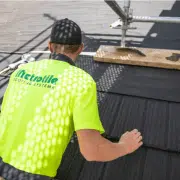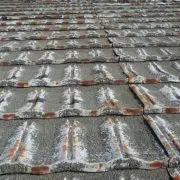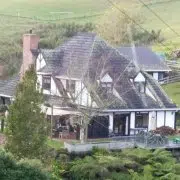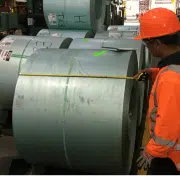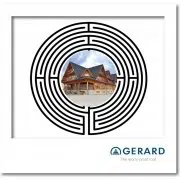The easiest way to tell if you need a roof is to safely get up onto your roof and inspect it for the following
HOW TO TELL IF YOU NEED A RE-ROOF?
Asphalt Shingles – The shingles are peeling off or appear to be sun faded or have some crack.
Concrete – Your concrete tiles are chipped and/or cracking in multiple places.
Decramastic – Your tiles are dented, rusty or the chip appears to be coming off.
Longrun (Iron) – Your roof is rusty or dented.
When making the decision to put a new roof on your home, it’s good to know what to look for and what is involved. Also if you’ve never been through the re-roofing process before, you likely have a number of questions, such as:
- How to tell if you need a re-roof?
- If you do, where do you start?
- How do I find the right installer?
- What should you look for in a quote?
- Will the roof installation disrupt my life?
These are great questions. We want to help you prepare, so in this blog we walk you through the re-roofing process and provide all the answers. The good news is that it’s probably more straightforward than you think.
I NEED TO RE-ROOF, BUT WHERE DO I START?
It’s a smart idea to do a little of your ow research before talking to a roofing professional. This way you’re prepared with questions and know what to look out for. Below are some things to consider:
Timing – Re-roofing is often weather dependent so for a timely re-roof, you should choose a time of year that’s usually dry and calm in your area. However, if the work has to be carried out during the wetter months your roofers will use a waterproof sheet (tarpaulin) on your roof to prevent any water damage. They’ll only work one section at a time, replacing each section before moving on to the next one just in case it rains.
Your roof style – Know the style of your roof – this will influence which roofing materials will be best to use.
Your Location – The weather and other environmental conditions should also greatly influence your roofing material choice.
HOW DO I FIND THE RIGHT INSTALLER?
Now that you have an idea about what your roof needs – the next step is to look for a great installer that you can trust to do the job. A roof is a long-term investment so looking at warranties and using experienced installers is really where your focus should lie. Try asking friends for recommendations or try a google search for roof installers in your area, if you are interested in pressed metal tiles for your home you can find a list of Metrotile installers get in touch and we can provide you a list of installers for your area.
WHAT SHOULD I LOOK FOR IN A QUOTE?
A key thing to look for in a quote is total transparency – know exactly what you’re being quoted for so you’re not surprised by extra costs later on. Some things that are required for the re-roof but might not be in your initial quote are skip-bin hire, edge protection and scaffolding hire and install.
Pro tip: Calculate your total quoted amount against how long the roof is guaranteed (warrantied) for. This will give you some perspective on value for money between different roofing materials or installers. That last thing you want to do is go to the expense of re-roofing only to need to do it all over again in 10 years because it wasn’t done properly or covered by a warranty.
WILL THE ROOF INSTALLATION DISRUPT MY LIFE?
It’s comforting to know that while your roof is being fitted it will cause minimal disruption to your everyday life. We are often asked how long will it take? Do I need to move out? What else do I need to prepare?
How long will it take? You may be surprised to learn that the average time it takes to re-roof a home from go to woe is between 3 days and 1 week, depending on the weather as well as the size and complexity of the roof. A good idea is always to ask the installer prior to installation for an estimated time frame.
Do I need to move out? Don’t worry there’s no need to move out of your home during this process and there shouldn’t be any damage inside as your roofer should work in sections, removing all of the old tiles or sheets, disposing of them, then replacing each section before moving on to the next one just in case it rains.
What else do I need to prepare? Your roofer should take care of most of the preparation however, it is good idea to check with them what they will organize and what you might have to do. The main thing is to allow clear access to your home for easy arrival and removal of roofing materials.
WHAT HAPPENS ONCE MY NEW ROOF IS COMPLETE?
Once the project is complete, the contractors will remove guard rails and scaffolding from the site, before cleaning up and disposing of work materials. The roofing company will carry out a final inspection of the new roof.
As the homeowner, you will also get a chance to check your new roof at this stage and confirm you’re happy with it. This is a good time to discuss how to maintain your roof and warranties, so you have peace of mind that your new roof will last for you and your family.
For further information click the link below:
https://www.metrotile.com/news-blogs/the-re-roofing-process-made-simp

